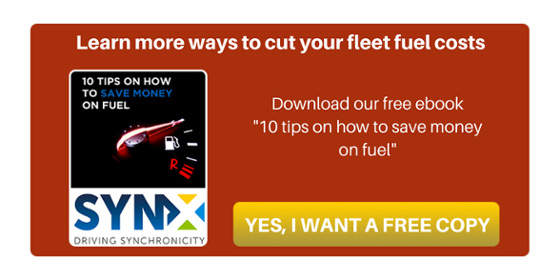.jpg?width=726&height=482&name=4%20ways%20to%20cut%20on%20your%20fleet%20fuel%20costs%20(2).jpg)
A good fleet manager will know how much they have spent on fuel. But reducing fuel costs can be much more tricky. With the help of Chevin Fleet Solutions and their infographic we have here compiled 4 tips in effective fuel management that can help you cut your spend and reduce fuel usage.
1. Look at Fuel Purchasing
Companies that operate a large fleet and buy substantial amounts of fuel will benefit from buying wholesale fuel and running it out of their own fuelling station. Companies who own a small-medium sized fleet may benefit from using a fuel card, benefits include:
- Make fuel reclaiming fraud more difficult
- Provide discounts on pump prices
- Provide data for reporting
- Produce electronic receipts
2. Vehicle Choice
A logical starting point when choosing a vehicle for yourself or your fleet is the official MPG figure, however the validity of these figures provided by manufacturers are often debatable; according to expert motoring publication, autoexpress.co.uk, “Emissions Analytics data collected from more than 1,300 tests since 2011 in the UK, Germany and US has found economy is 29 per cent lower on RDE (Real Driving Emissions) than current lab checks” so bear that in mind.
3. Plan Routes
A tip when planning routes is that the shortest route is not always the most efficient/fuel effective; a shorter, hilly route will use more fuel than a slightly longer route on a level, straight road with no traffic lights.
Logical thought is a handy skill here, for example if you are based in Newcastle and have a meeting in Leeds on Thursday, and a meeting in Bradford on Friday, there needs to be a few questions asked from an operational point of view; if possible one of these meetings should be moved because of the short distance between Leeds and Bradford.
4. Driver Behaviour
If all other factors are covered, the only thing that can have a significant effect on fuel consumption is driver behaviour. Data collected from Chevin show that a poor driver can increase the costs spent on fuel by 21% when compared to an average driver and by 31% when compared to a good driver.
Below are a few tips that you should either adopt yourself, or train your drivers to integrate into their driving habits:
- Be in the right gear
Shift into the higher gears earlier when on level ground – this will reduce the load on the engine. - Optimise routes
As stated in tip number 3. - Drive smoothly
Don’t accelerate or brake suddenly and you will save massive amounts of fuel over time. - Ensure tyres are inflated correctly
According to fleet experts PEAK, “By inflating your tyres properly, you can decrease fuel consumption considerably by a minimum of three percent”. By checking on abevel in the driver’s side door or inside your vehicle manual, you can discover the optimum tyre pressure. Remember to check your tyres monthly at the very minimum and if you can, once a week. - Remove unused external assets
Trailer and roof racks increase wind resistance when driving and make the engine work harder – if they aren’t in use, remove them from your vehicle. - Remove excess weight
You must notice when you have a full car that it seems like it’s working harder to accelerate; the extra weight makes the engine work harder and thus uses more fuel. Unfortunately, we cannot always avoid providing lifts for our friends and family but when the car is empty, make sure to remove any unnecessary extra weight, according to RAC, “every 50kg will increase your fuel consumption by 2%”. - Don’t idle
If you are waiting for anything for over 10 seconds, you will save more petrol by switching your vehicle off and restarting.
All these tips are well summarised in the infographic produced by Chevin.
Driver apps and telematics can offer your or your fleet in-depth reporting on vehicle performance and driver behaviour. Key aspects to look for when choosing are:
- Audio and visual tools that will highlight areas for improvement as it happens – this will influence better driving practice immediately, rather than retrospectively.
- Ability to integrate into fleet management software which will allow more sophisticated analysis.
- Reporting – this will show data on when drivers are idling for the longest, accelerating fastest and braking hardest. This will allow analysis for when and where fuel is being wasted.



